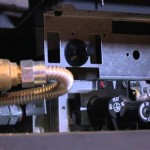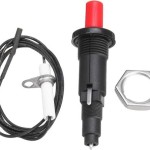Understanding Fireplace Chimney Liners: Safety and Functionality
A fireplace is a cherished feature in many homes, providing warmth and ambiance. However, the safe and efficient operation of a fireplace relies heavily on the condition of its chimney. A crucial component of a chimney system is the chimney liner, which acts as a protective barrier between the fire's byproducts and the chimney's structure. This article will explore the purpose, types, importance, and maintenance aspects of chimney liners.
The primary function of a chimney liner is to contain and safely vent the harmful gases produced during combustion, such as carbon monoxide, smoke, and creosote. These substances, if not properly channeled, can pose significant risks to both the building and its occupants. Creosote buildup, in particular, is a highly flammable substance that can lead to chimney fires. Deteriorated masonry can allow carbon monoxide to seep into the home, creating a health hazard. A properly installed and maintained chimney liner mitigates these dangers.
Beyond safety, chimney liners also contribute to the overall efficiency of the fireplace. By providing a smooth, continuous flue, liners optimize draft and prevent heat loss. When a chimney's structural integrity is compromised, it leads to air leakage, reducing the fireplace's ability to effectively draw smoke and maintain a consistent burn. A well-functioning liner helps maintain optimal combustion and enhances the fireplace's heating performance.
The Critical Role of Chimney Liners in Preventing Damage
Chimney liners play a vital role in protecting the chimney structure from the corrosive effects of combustion byproducts. The acidic nature of flue gases, particularly those from burning wood or fossil fuels, can gradually erode the mortar joints and brickwork of a chimney. This deterioration can lead to cracks, spalling (surface crumbling), and ultimately, structural instability. Replacing a damaged chimney is a costly undertaking, and a properly functioning liner is a cost-effective preventative measure.
The intense heat generated within a fireplace can also cause thermal stress on the chimney's materials. The expansion and contraction of brick and mortar due to temperature fluctuations can weaken the structure over time. A chimney liner acts as a thermal buffer, reducing the direct impact of heat on the chimney's masonry. This protection helps to prolong the lifespan of the chimney and prevent costly repairs.
Furthermore, a properly sized chimney liner ensures adequate draft. An improperly sized flue can lead to backdrafting, where smoke and combustion gases are drawn back into the home. This issue is not only unpleasant but also introduces harmful pollutants into the living space. A correctly sized liner, matched to the fireplace's specifications, optimizes airflow and prevents backdrafting, ensuring safe and efficient operation.
Common Types of Chimney Liners
Several types of chimney liners are available, each with its own set of characteristics and suitability for different applications. The selection of the appropriate liner depends on factors such as the type of fuel burned, the condition of the existing chimney, and local building codes.
Clay tile liners were a traditional choice for many years and are still found in older chimneys. While relatively inexpensive, clay tiles are susceptible to cracking and spalling, particularly when exposed to rapid temperature changes and acidic flue gases. Clay tile liners are typically installed in individual sections and are not completely sealed, creating potential points for leakage. Due to their inherent limitations, clay tile liners are often replaced with more durable and efficient options during chimney renovations.
Cast-in-place liners involve pouring a cement-like mixture into the existing chimney flue to create a seamless, insulated lining. This method is often used to repair severely damaged chimneys and can provide excellent structural support. Cast-in-place liners offer good resistance to heat and corrosion, and they can effectively seal cracks and gaps in the original chimney structure. However, the installation process can be more complex and time-consuming compared to other lining options.
Metal chimney liners, typically made of stainless steel, are a popular and versatile choice. Stainless steel liners are durable, corrosion-resistant, and can be used with various types of fuel, including wood, gas, and oil. They are available in both rigid and flexible forms, making them suitable for a wide range of chimney configurations. Flexible stainless steel liners are particularly useful for navigating bends and offsets in the chimney flue. The installation process for stainless steel liners is generally straightforward, and they offer a long lifespan with proper maintenance.
Aluminum liners are sometimes used for venting gas-burning appliances. However, aluminum is not suitable for use with wood-burning fireplaces due to the corrosive nature of wood smoke. It is crucial to ensure that the appropriate type of liner is selected based on the fuel type and the manufacturer's specifications.
The Importance of Professional Chimney Liner Installation and Inspection
Proper installation of a chimney liner is essential for its performance and safety. While some homeowners may consider a DIY approach, it is generally recommended to hire a qualified chimney professional. A professional has the expertise and experience to properly assess the condition of the chimney, select the appropriate liner type and size, and install it according to local building codes and industry best practices.
Incorrectly installed chimney liners can lead to various problems, including poor draft, creosote buildup, and carbon monoxide leaks. These issues can compromise the safety of the occupants and the structural integrity of the chimney. A professional installer will ensure that the liner is properly sealed, insulated, and connected to the fireplace and chimney. They will also conduct a thorough inspection to verify that the installation meets all safety requirements.
Regular chimney inspections are also crucial for maintaining the liner's integrity and detecting any potential issues. The Chimney Safety Institute of America (CSIA) recommends that chimneys be inspected at least once a year. During an inspection, a qualified chimney sweep will examine the liner for cracks, corrosion, and other signs of damage. They will also check for creosote buildup and other obstructions that could impede airflow.
If any damage is detected during an inspection, it is important to address it promptly. Minor cracks or gaps can often be repaired with sealant or patching compounds. However, more significant damage may require liner replacement. Delaying repairs can exacerbate the problem and lead to more costly and dangerous consequences.
In addition to annual inspections, it is advisable to schedule a chimney cleaning at least once a year, especially if the fireplace is used frequently. Chimney cleaning removes creosote buildup, which reduces the risk of chimney fires and improves the overall efficiency of the fireplace.
Choosing the right chimney professional is crucial for both installation and maintenance. Look for a company that is licensed, insured, and certified by a reputable organization such as the CSIA. Check online reviews and ask for references to ensure that the company has a track record of providing quality service. A qualified professional will be able to answer your questions, address your concerns, and provide expert guidance on all aspects of chimney care.
In summary, the chimney liner is a fundamental component of a safe and efficient fireplace system. Its role in containing combustion byproducts, protecting the chimney structure, and optimizing draft is paramount. By understanding the different types of liners, the importance of professional installation and inspection, and the need for regular maintenance, homeowners can ensure the long-term safety and performance of their fireplaces.

Chimney Liners Usa Size A Fireplace Liner

What Is Chimney Relining And It Necessary

Heatshield Relining Charlotte Nc Owens Chimney Systems

How To Install A Chimney Liner

Fireplace Installation Chimney Liners

8 Advantages Of Using A Clay Chimney Liner

Chimney Liners Usa Fireplace Insert Venting Information

Flue Liners Chimney Liner Options Stainless Steel

What Is The State Of Your Chimney Flue Cincinnati Oh Care Co

The Benefits Of A Chimney Liner Savers
Related Posts








